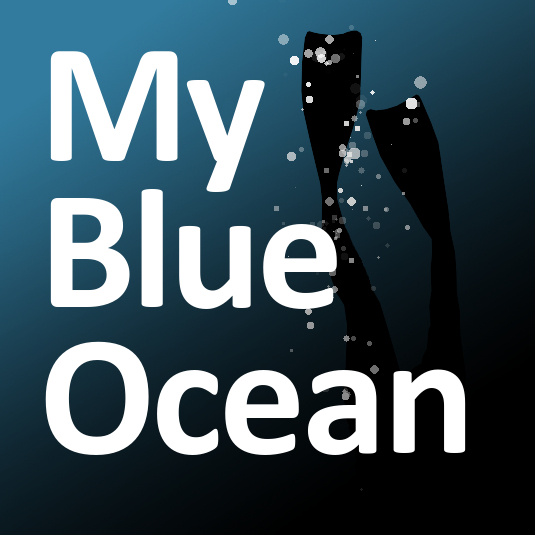Our hunt for rare pelicans –
Unsere Suche nach seltenen Pelikanen

Montenegro takes us further to the Skadar lake. Our next destination invites us with the chance to see Dalmatian Pelicans. We wonder if they will be to few that we won’t be able to discover them. Anyway the Skadar lake is the largest fresh water lake of the Balkan region. It reaches over 48 km in length and 14 km in width. Two third of the lake lie on the side of Montenegro, the rest belongs to Albania. Montenegro decided to put its part 1983 under protection and is now a national park. Next to around 40 species of fish, 280 bird species call it their home. Thus the area is a top destination for ornithologists in Europe! Meanwhile several bird watching stations exist. Most of the lake is only around 5 to 9 m deep. In the summer the temperatures in the lake can reach up to 28 °C, no wonder. But still the lake doesn’t dry out. Instead it is spring fed from underground rivers. At first we visit the northern end of the lake with the local information center. We learn that it is almost impossible to meet the pelicans without a boat and that the boat rental is closed and that the tour boats don’t operate due to the lack of tourists during the winter. The chances to meet some of the 100 pelicans on this large lake have thus dwindled for us. But we don’t give up! See for yourself:
🚑….
In Montenegro entscheiden wir uns für den Skadar See als weiteres Reiseziel und zugegebenermaßen locken uns die seltenen Krauskopfpelikane. Ob sie wohl so selten sind, dass wir sie gar nicht erst zu Gesicht bekommen? Der Skadarsee ist jedenfalls der größte Süßwassersee des Balkans, er erstreckt sich über ungefähr 48 km Länge und 14 km Breite. Ungefähr 2/3 des Sees liegen in Montenegro, der Rest gehört zu Albanien. Der montenegrinische Teil des Sees wurde 1983 zum Natioanlpark erklärt. Neben etwa 40 Fischarten wurden hier bisher 280 Vogelarten gezählt, eine Topdestination für Ornithologen in Europa! Mittlerweile gibt es auch mehrere Vogelbeobachtungsstationen. An den meisten Stellen ist der See nur 5-9 Meter tief. Im Sommer steigt die Wassertemperatur auf bis zu 28 Grad Celsius an, kein Wunder bei der geringen Wassertiefe. Und dennoch trocknet der See nicht aus, ganz im Gegenteil, er wird unter anderem aus unterirdischen Quellen gespeist. Zunächst besuchen wir ein im Norden des Sees gelegenes Infozentrum und erfahren, dass es eigentlich ziemlich unmöglich ist, die Pelikane ohne Boot zu sehen und dass der Bootsverleih im Winter eingestellt ist und Ausflugsboote aufgrund fehlender Touristen im Winter nicht unterwegs sind. Die Chance, einige der ungefähr 100 Pelikane auf diesem großen schönen See zu entdecken, ist damit ziemlich gering, aber wir wollen es dennoch versuchen und lassen und nicht entmutigen. Seht selbst:

Und so sieht es aus, das Objekt unserer Begierde: ein seltener Krauskopfpelikan. Dieses präparierte Tier sehen wir in dem kleinen gut gemachten Infozentrum des Nationalparks Skadar See.

Der erste Eindruck vom See sieht erstmal gar nicht nach Nationalpark aus. Wir passieren diesen Damm im Norden des Sees und er ist voll besetzt mit Anglern, welche große Fische rausziehen und an der Straße zum Verkauf anbieten. Angellizensen kann man im Infozentrum kaufen. Da der See aber für seinen Fischreichtum bekannt ist, vertrauen wir darauf, dass das hier gut gemanagt wird!

Der Skadar See ist an der Nordwestseite sumpfig und schlecht zugänglich. Hier versteckt im Schilf liegen die Brutplätze der Pelikane, am besten sind sie per Boot zu beobachten. Aber es ist ja sowieso grad keine Brutsaison….

Das Wetter trübt sich langsam ein, Regen steht bevor (Noch sind wir unwissend, wie viel wir davon noch erleben werden!). Wir erleben den Skadar-See in einer besonders mystischen Stimmung.

An der Südseite des Skadar Sees sieht die Landschaft ganz anders aus. Das Rumija-Gebirge trennt den See von der Adria, es sind nur ungefähr 20 Kilometer zwischen See und Adria, aber dafür sind diese bis zu 1600 Meter hoch!

Wir fahren im Süden über die Panorama-Straße durch die Berge hoch über dem See. Am Ufer führt kein Weg entlang. Auf dieser kleinen Insel sind die Reste einer Festung erhalten. Das Fortress Grmožur wird auch als montenegrinisches Alkatraz beschrieben, in diesem Gefängnis wurden einst Nichtschwimmer inhaftiert.

Wir haben nur Augen für die ehemalige Festung, welche voller Kormorane war. Im Skadar See lebt die zweitgrößte Kolonie von Pygmäenkormoranen. Aber…. Schaut mal ganz genau hin!

Später am PC, als wir ins Bild hineinzoomen, sehen wir – ja – Pelikane!!! Von hoch oben auf der Panoramastraße konnten wir sich nicht erkennen. Also haben wir die heiß ersehnten Pelikane doch irgendwie angetroffen, ohne sie jedoch wirklich gesehen zu haben…

Die Aussicht auf die Insel Beška ist auch im Dezember grandios, auch ohne Restaurant. Und wir haben ja im Camper glücklicherweise alles fürs Picknick dabei 😀

Von unserem Schlafplatz hören wir seit dem Aufwachen irgendwo einen Esel rufen. Auf der Weiterfahrt stehen wir dem süßen Kerlchen dann gegenüber und er staubt noch ein paar Streicheleinheiten bei uns ab!

Wir fahren schließlich zurück an die Küste nach Utjeha ins Camp Oliva, denn es werden mehrere Tage Sturm voraus gesagt, welche wir gern mit Strom für unsere Heizung, Internet und warmen Duschen verbringen wollen.

Das kleine Camp liegt direkt an der Küste, die Stellplätze sind verteilt auf einem kleinen Olivenhain mit wahnsinnig alten Bäumen! Der Sturm fegt die Oliven von den Bäumen, es wurden großflächig Netze darunter ausgelegt, um aus den Früchten Olivenöl pressen zu können.

Drei Tage verharren wir im Camp und trotzen dem Sturm, während es Oliven auf den Ferdi regnet, ein interessantes Geräusch… Klong! In den wenigen Minuten ohne Regen spazieren wir zum Supermarkt entlang der Küste und bestaunen die hohen Wellen.

Die Bedingungen zum Tauchen wären perfekt, denn das Camp Oliva liegt direkt am Meer. Aber der Sturm hält uns leider davon ab. Er wandert nun langsam südwärts und wir werden ihm langsam hinterherfahren, Richtung Albanien in ein neues Land auf unserer Route!








